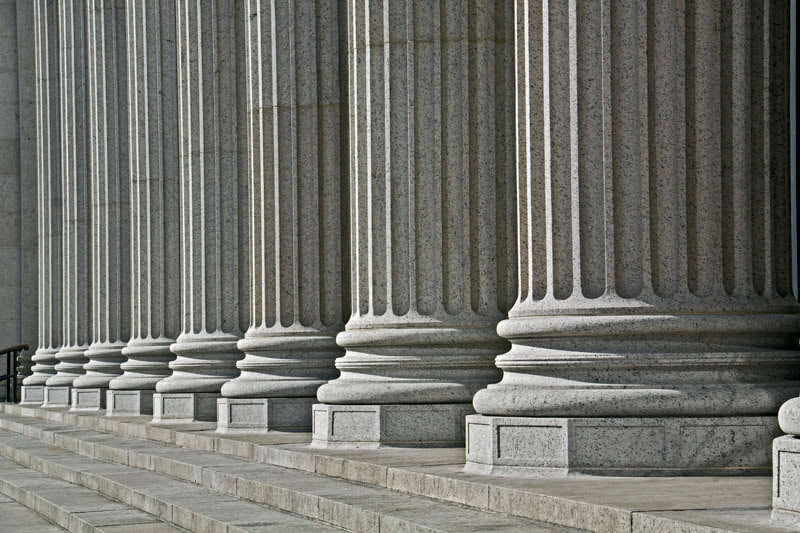My article The Dramatic Arc of the PTC was just published in North American WindPower and discusses the history of the production tax credit (PTC) from its original enactment to the phaseout. Here’s the text of the article:
The production tax credit (PTC) is the force that spurred the U.S. wind industry from an immaterial segment of power generation in the early 1990s to providing the fastest-growing job in America – wind turbine technician. At the end of 2016, the total wind capacity in the U.S. was more than 82 GW. Now, like the finale of a Fourth of July fireworks show, the PTC has several more exciting bursts to go and then will, in theory, peter out.
Many newcomers to the wind industry may be surprised to learn that the PTC was not born during the Obama administration or even the Clinton administration. Rather, the PTC was born in 1992, and its proud parents were Sen. Charles Grassley, R-Iowa, and President George H.W. Bush.
The PTC was originally $.015/kWh for the first 10 years of a wind project’s operations. However, the statute provides for an inflation adjustment. Accordingly, 25 years later, the PTC is $.024/kWh, a 60% increase since its inception in 1992, and will continue to be adjusted in future years. The inflation adjustment applies not only to new projects, but also to PTCs generated by operating projects that are still within their 10-year initial operating period.
The drama
The PTC’s life has been worthy of a soap opera. Every few years, it has been slated to lapse (the first time being in 1999), and it has, in fact, lapsed on multiple occasions. But like a soap opera character, the PTC was brought back to life through the valiant efforts of its fans (in Congress), while in other years, the PTC “entertained” the wind industry with the cliff-hanging suspense of a last-minute extension.
Other than its periodic reincarnation, there have been five highlight-worthy changes in PTC policy. The first was the American Jobs Creation Act of 2004 when Congress excluded the PTCs generated in the first four years of a project’s operation from the sinister “alternative minimum tax” rules. This change means that even tax equity investors with many other tax benefits on their tax returns that caused them to pay federal taxes at a rate of less than 20% could still receive full benefit for the PTC generated in the first four years of a project’s life. This change helped keep certain large tax equity investors in the market.
Second, in 2007, the IRS published Revenue Procedure 2007-65 that created a safe harbor for structuring wind tax equity partnerships. This revenue procedure provides the industry with clear structuring guidelines that facilitated a growth in tax equity transactions until the financial crisis hit in late 2008.
Third, Congress enacted the American Recovery and Reinvestment Tax Act of 2009 in response to the financial crisis. Congress recognized that economic losses due to the financial crisis, and their resulting impact on the tax appetite of financial institutions that act as tax equity investors, had virtually shut down the tax equity market and, accordingly, the U.S. wind industry.
To address the condition of the tax equity market, Congress provided the owners of new wind projects with the option to elect a 30% investment tax credit and then the option to receive a cash grant in the same amount from the Treasury in lieu of the investment tax credit. The cash grant was last available for wind projects placed in service in 2012.
However, the 30% investment tax credit election for wind continues to be available but is rarely selected by wind farm owners (other than in the case of offshore projects) due to the high capacity factors of today’s projects that have resulted from improvements in turbine technology.
Further, the Treasury cash grant program provided the wind industry with more drama. After an initial honeymoon period, the Treasury grew skeptical of cash grant requests and started to impose its own judgment as to the appropriate cost of wind projects (and other forms of renewables) and paid reduced cash grants based on the Treasury’s black box valuations. Not surprisingly, this led to litigation. The first wind projects to be litigated were the Alta Wind projects that were developed by the prominent developer Terra-Gen.
During the Alta Wind trial in a Perry Mason moment, it was determined that the government’s expert witness, an MIT professor, had failed to disclose that he published articles in communist East German publications. Due to this lack of candor, the judge disqualified the professor from testifying and precluded the government from replacing him with another expert witness. Not surprisingly, Alta Wind won the case, and the trial judge wrote an opinion that effectively constrained the government’s ability to second-guess the pricing of cash grant (and, presumably, the investment tax credit, too) renewable energy transactions. Alta Wind and the tax bar eagerly await the Federal Circuit’s opinion on the appeal.
Fourth, the American Taxpayer Relief Act of 2012 changed the 20-year-old standard to qualify for PTCs from a project having to be “placed in service” (i.e., operational) by the statutory deadline to “construction” having to “begin” before the statutory deadline. Initially, to qualify for the PTC, construction of the project had to begin before Jan. 1, 2014. This deadline was extended to beginning construction before Jan. 1, 2015, by the Tax Increase and Prevention Act of 2015.
Fifth, neither the 2014 nor the 2015 deadline ended up mattering because the Consolidated Appropriations Act, 2016 extended the start-of-construction deadline and codified a gradual phaseout of the PTC. This statutory change, in conjunction with generally favorable IRS guidance defining the meaning of “begun construction,” gave the wind industry certainty through 2020.
The longest final season
The phaseout provides that wind projects that “began construction” in 2016 (or earlier) are entitled to 100% of the PTC, or the full $.024/kWh; projects that begin construction in 2017 are entitled to 80%, or $.0192/kWh; projects that begin construction in 2018 are entitled to 60%, or $.0144/kWh; and projects that begin construction in 2019 are entitled to 40% of $.0096/kWh. Finally, under current law, there is no PTC for projects that begin construction in 2020 or later.
The key question is, what does it mean to “begin construction”? The IRS generously defined “beginning of construction” to mean spending 5% of the total cost of the project or undertaking “significant physical work,” which was based on rules the Treasury had published to specify eligibility for the cash grant program it administered.
Deep-pocketed developers (e.g., NextEra) opted for the objective 5% approach, as that could be easily implemented and documented with purchase contracts, invoices and wire transfers. However, lightly capitalized developers wanted to play, too, but could not write a check for 5% of the total cost of future projects. Therefore, they were left with the fuzzy “significant physical work” approach.
For a few months, tax advisors wrung their hands about the quantification of “significant.” Then, the IRS issued guidance that provided there is no minimum amount of work required, so long as the work was of the appropriate “nature.” The IRS guidance included useful examples of what types of work qualified – excavating turbine sites, building roads to be used for operations and maintenance purposes, and manufacturing a customized step-up transformation.
The only drawback in the IRS’ guidance is that it imposed a requirement not in the statute: A project owner upon starting construction had to “continuously” progress the project through to completion. This led to more handwringing among tax advisors as to the meaning of “continuous.”
The IRS eventually provided some relief and published a safe harbor that the “continuous” requirement would not be applicable so long as the project is in service on Dec. 31 four years after the year construction started; further, that fourth anniversary would not be deemed to be before Dec. 31, 2018, regardless of what work may have occurred prior to 2014. It is reported that between 30 GW and 70 GW of wind projects “began construction” in 2016. NextEra alone stated it “began construction” of 10 GW.
To meet the IRS’ four-year rule, those 30-70 GW will come online between now and Dec. 31, 2020. That will keep manufacturers, construction companies, developers, tax equity investors and their advisors busy for the next 40 months.
What we do not know is if developers, to any material extent, will continue to “begin construction” of additional wind projects between now and the end of 2019 in light of the progressively shrinking PTC, or was that 30-70 GW the last shot?
Final season plot twist
Finally, the wind industry is living through a plot twist of Donald Trump as president. Trump had opposed a wind farm in the vicinity of one of his golf courses and has criticized it for its intermittent nature and purported risk to birds.
Grassley – the father of the PTC – stepped up to protect his baby. At the confirmation hearing for Secretary of the Treasury Steven Mnuchin, the senator asked if Mnuchin supported allowing the PTC phaseout to run its course undisturbed. Mnuchin responded that he did. Thus, it appears the IRS will not be ordered to rescind or negatively alter its “begun construction” guidance, and the administration will not propose a repeal of the phase-out statute.
Now, the wind industry hopes for a wind-friendly Congress in 2019 and beyond and a wind-friendly president in 2021 and beyond. Such a president taking office in 2021 would be just in time to address what seems will be an inevitable lull following the last of the 30-70 GW projects that “started construction” in 2016 being placed in service by the end of 2020 to meet the four-year safe harbor. We can only imagine where the wind industry and tax policy will be in 2021, but history suggests the road there will be an interesting one.



